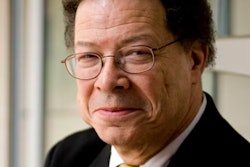I have always been a lover of language, in all of its various forms. A voracious reader since the age of three, I became fluent in a second language by the time I reached high school, was pleasantly surprised in college to discover that I spoke a third language called “Black English,” and, since then, have learned “un poco” of four additional languages. Other language forms I have studied and learned are the language of dance, the language of health and fitness, the language of love (I think) and the language of digital technology (even less sure). My fascination with language, as a method of expression and communication, is precisely because of what it can do and that it exists in so many various forms.
It is also why I am so concerned with the direction of current trends in language and, ultimately, our communication. While today’s digital technology advances seem to have increased our “communication capabilities,” our actual communication seems to be worsening; we are effectively communicating less. And it all comes down to language. As either an enabler or barrier to communication, our very existence depends on whether we share a language that enables us to communicate effectively with each other. When we use the language of digital technology, are we all speaking the same language? Is it enabling effective communication?
First, there are the words themselves, i.e. the verbal. The same principles apply to social media, text and email that I learned in that “Black English” course in college; current digital technologies have introduced a new “language” with new terminology, phrases and words. If our digital terms, phrases and words are different (and constantly changing), are we “speaking the same language?”
Second, ever heard the old adage “communication is only 7 percent of what we say?” Even conservative research measures nonverbal communication at 60 percent of human communication. This includes our facial expressions, body language, voice tone, pitch, flow or volume, words of emphasis or style of speaking. If these other language factors are even more important than words for effective communication, and we lose them in cyberspace, can we truly communicate?
Lastly, there is culture and how culture influences the language we use, how we express ourselves and, as a result, what we hear when others speak. Cultural influences can affect our language and communication along multiple aspects of cultural diversity (and our identities) – region, ethnicity, religion, politics, etc. A quote from Anthony Robbins reminds us that “to effectively communicate, we must realize that we are all different in the way that we perceive the world and use this understanding as a guide to our communication with others.” In the digital world, when we are effectively homogenized behind the keyboard, how does this lack of awareness of culture affect our ability to communicate effectively?
The loss of any part of the equation of verbal and nonverbal language expressed through the lens of culture is a loss of our ability to communicate. By challenging our ability to use verbal, nonverbal and cultural cues and “read from the same hymn book,” it is easy to understand how the language of digital technology is negatively affecting our communication.
And that’s not all. The language of digital technology also has an underacknowledged ripple effect on our physical and mental health.















